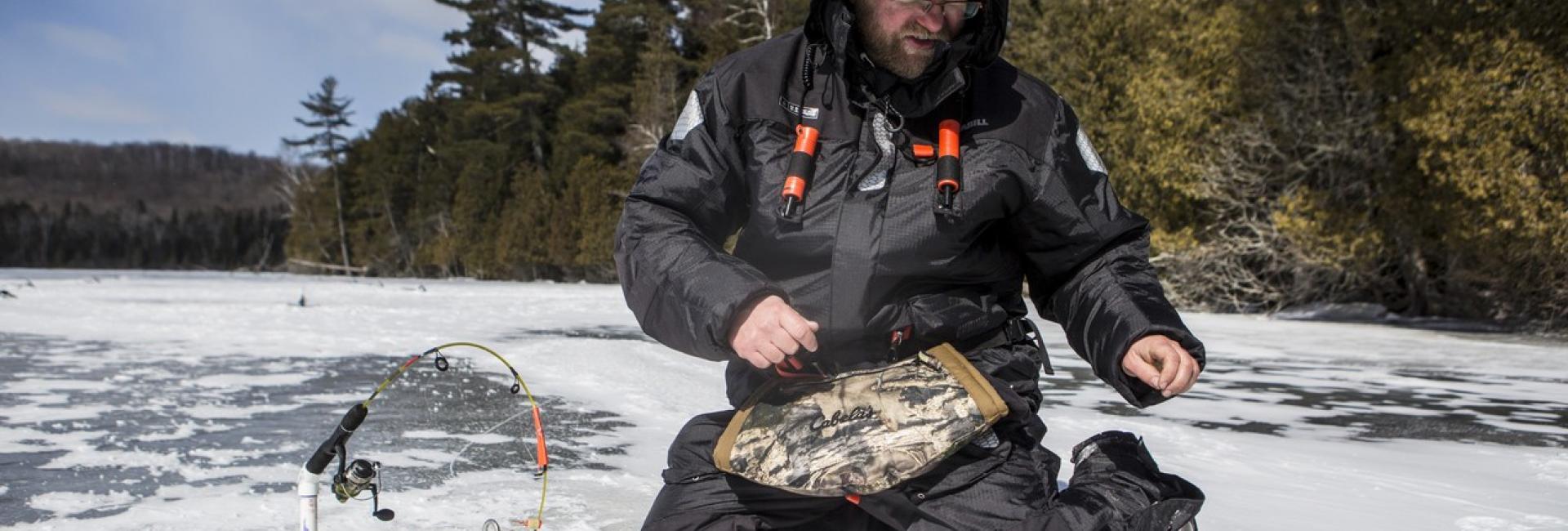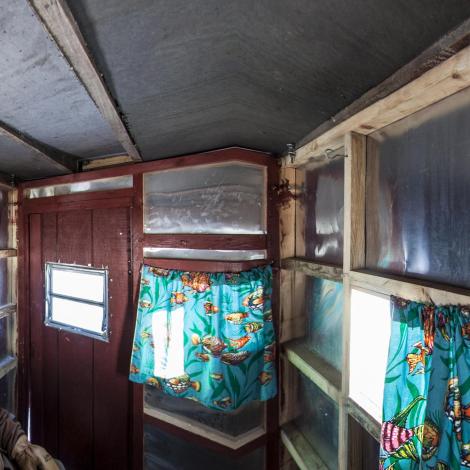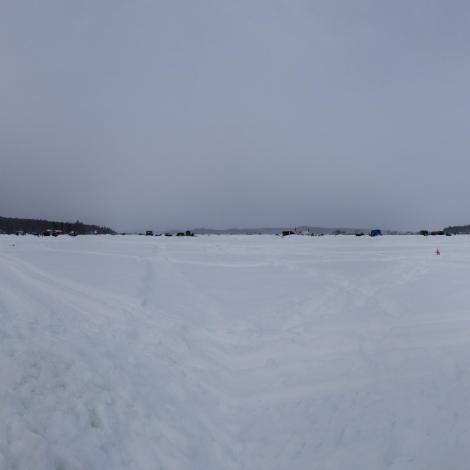When it comes to ice fishing in the Adirondacks, people usually fall into two camps. Those who do it, and those who send memes to their friends of Jack Nicholson’s frozen face from “The Shining” — his dead, black eyes rolled back in his head, at the sheer incomprehensible existence of the sport.
For a long time, I found myself firmly entrenched in the meme-sending camp. I didn’t get it. My feet get cold just walking to my car. Seeing pickup trucks parked on lakes makes me nervous, even when the ice is plenty thick. Moreover, I can drink a can of beer from the comforts of — well, anywhere, really. However, the time I went, I didn’t even drink beer, and I still had a blast.
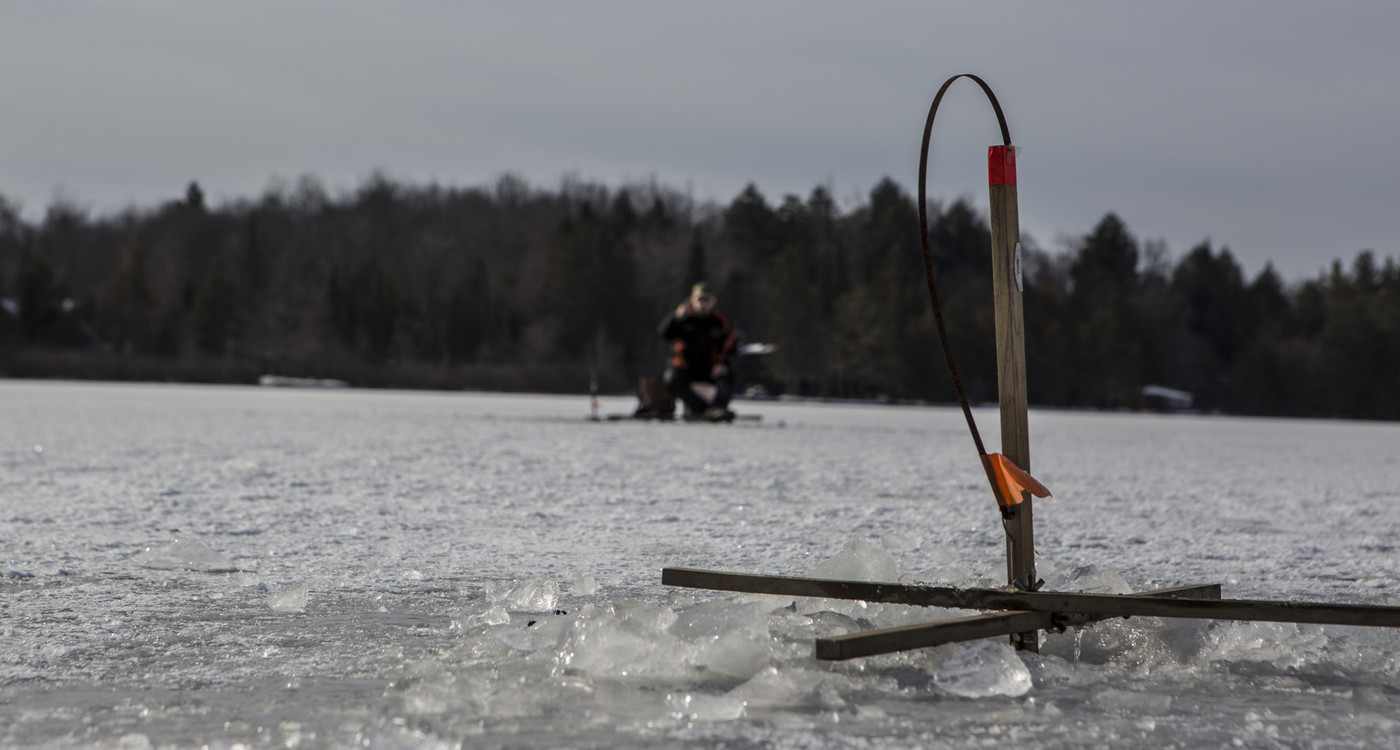
“How can that be?” you chortle. Well, there’s just something about walking over spots you’d normally only see from shore or by boat. And there’s the whole winter wonderland effect too. You’re standing in this vast expanse of white, tufts of snow clinging to the pine boughs in the distance, and for a fleeting moment you can almost conjure sleigh bells, cascading orchestral arrangements, Johnny Mathis singing in the background, and it doesn’t matter that the air freezes the hair in your nostrils, because it somehow makes you feel lighter inside.
What? Too poetic for ice fishing? Fine. It helps when you actually catch something too, and to do that, you need to stay warm long enough to get some action.
If your feet go, you’ll be miserable, so winter boots with the thickest soles and lowest temperature rating you can find, coupled with wool socks, are going to be your best friend. Cotton is your nemesis, so go with a thermal base layer of moisture-wicking fabric. Since you’ll be kneeling on ice throughout the day, a good pair of snow pants will keep your legs dry and warm, and layers of insulating, moisture-wicking clothing up top, think wool and fleece here, along with a down jacket or heavy parka, are a must.
Winter hat? Obviously. Sunglasses? You bet (it gets bright out there, even when it’s overcast). Gloves? Um, yeah, but there’s pretty much no way around your hands getting a little cold — you’re going to be baiting hooks and, hopefully, yanking fish out of frozen water, after all.
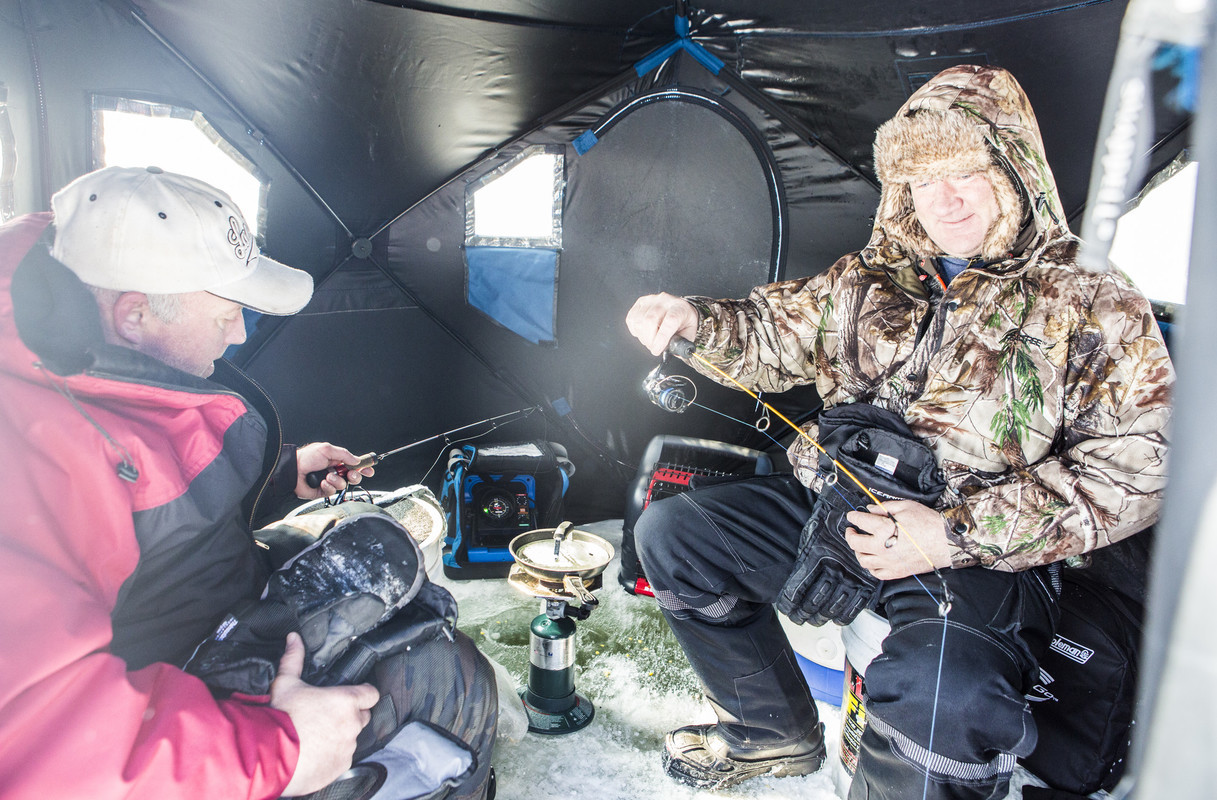
Some people wear those glove-mitten hybrids, where the mitten top pulls back so you can use your fingers for those nimble tasks. Others swear by neoprene-coated mittens or gloves. But, if you’re like my sister, and are religious about hand warmth, bring at least two pairs of whatever you fancy (she brings many more) — one to use when you’re out doing the actual work of fishing, this is the pair that will get wet, and another for when you’re not, so you’re always assured of having a dry pair. And those hand warmer packets can be little slices of heaven.
Look, there are so many articles out there, you can google “ice fishing in the Adirondacks,” spend half a day reading about it, and end up thinking you’ve got this covered. But, if you’ve never been out before, do yourself a favor and hook up with a guide. Not only do guides help keep you safe and show you the ropes, they also provide all the equipment you’ll need, as well as some coffee and snacks to keep you warm and fueled.
But the best thing guides bring with them is an extensive knowledge of what’s beneath your feet, and this is essential, says Sonny Young, who’s been guiding folks in the Adirondacks for almost 35 years. Just driving up to a lake, walking out and randomly drilling holes will not only lead to a bad day of fishing, he cautions, but it’s dangerous as well. If there’s a stream or river flowing into or out of the lake or pond you’re fishing, the ice around that moving water won’t freeze as fast or as thick, and if you don’t know about it, a wrong step can sink you.
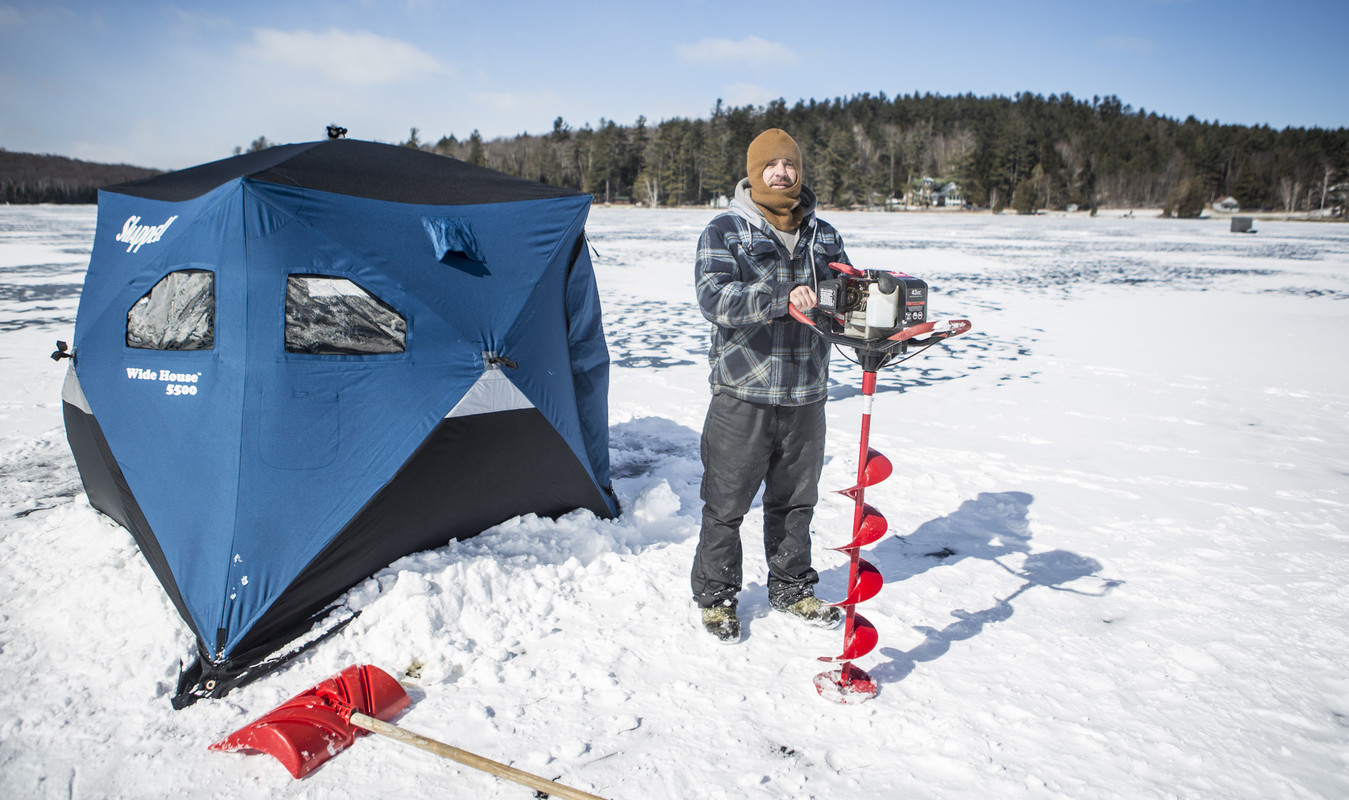
An Adirondack guide will go over what you should do in that event before taking you out, but even still, it’s worth taking a minute reiterate — your natural instinct will be to try and climb out, like you would a pool, and that won’t work. You’ll just continue breaking the ice around you and use up your strength. So, give your body a minute to adjust to the shock, then set about getting out as calmly as possible — a set of small picks you can wear around your neck will make this a little easier.
However, enough of the doom and gloom. I’m supposed to be encouraging you, not scaring you off, so let me just say there’s a childlike excitement in seeing your first tip-up flag trigger, letting you know you’ve got something on the line, coupled with an equally childlike impatience, as you run to the hole and are forced to wait for the fish to run with the bait a little while before reeling it back.
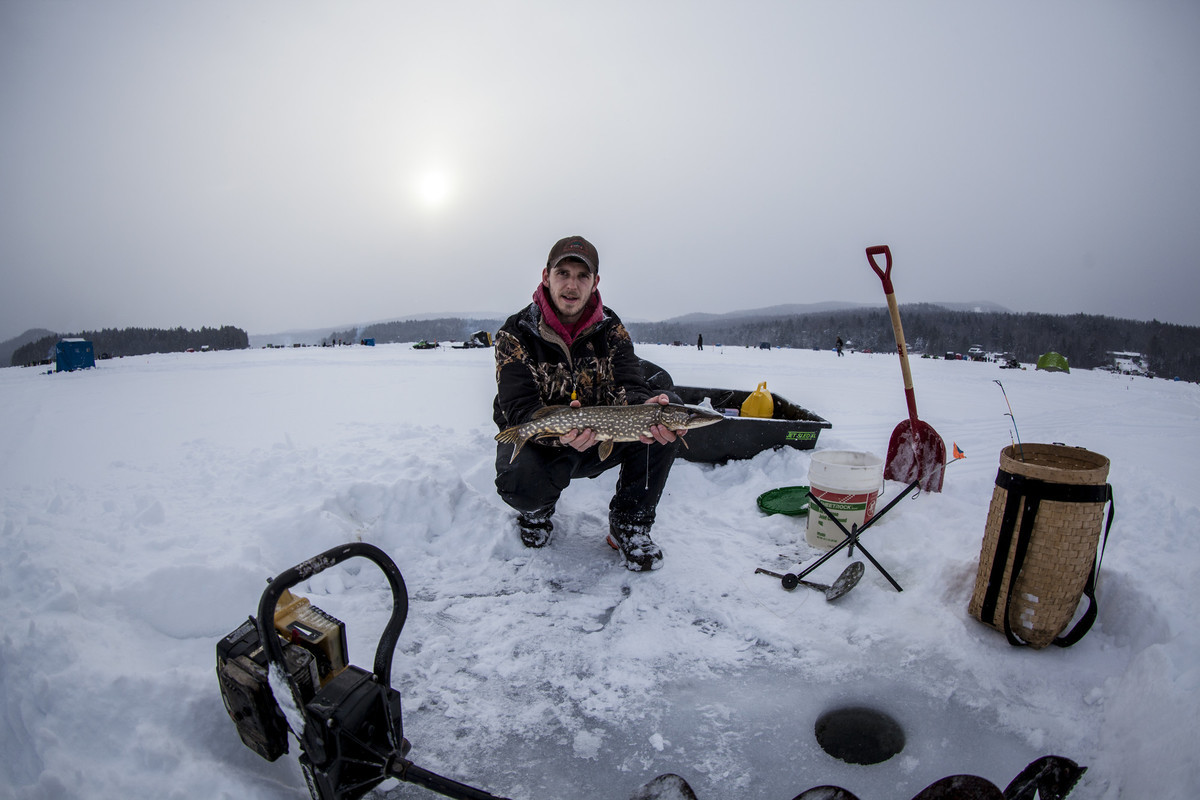
Also, there’s the camaraderie. Being alone on the ice — and by alone, I mean with your guide or with a seasoned friend — can be great. It gives you time to get in touch with nature and reflect. Sometimes, though, solitude also gives you time to think about the cold and the fact that you haven’t gotten any bites, and there are only so many ways jigging can occupy your mind. But venturing out to other folks scattered about, listening to their tales, picking up tips and sharing food and drink — that’s what often makes a day out on the ice special.
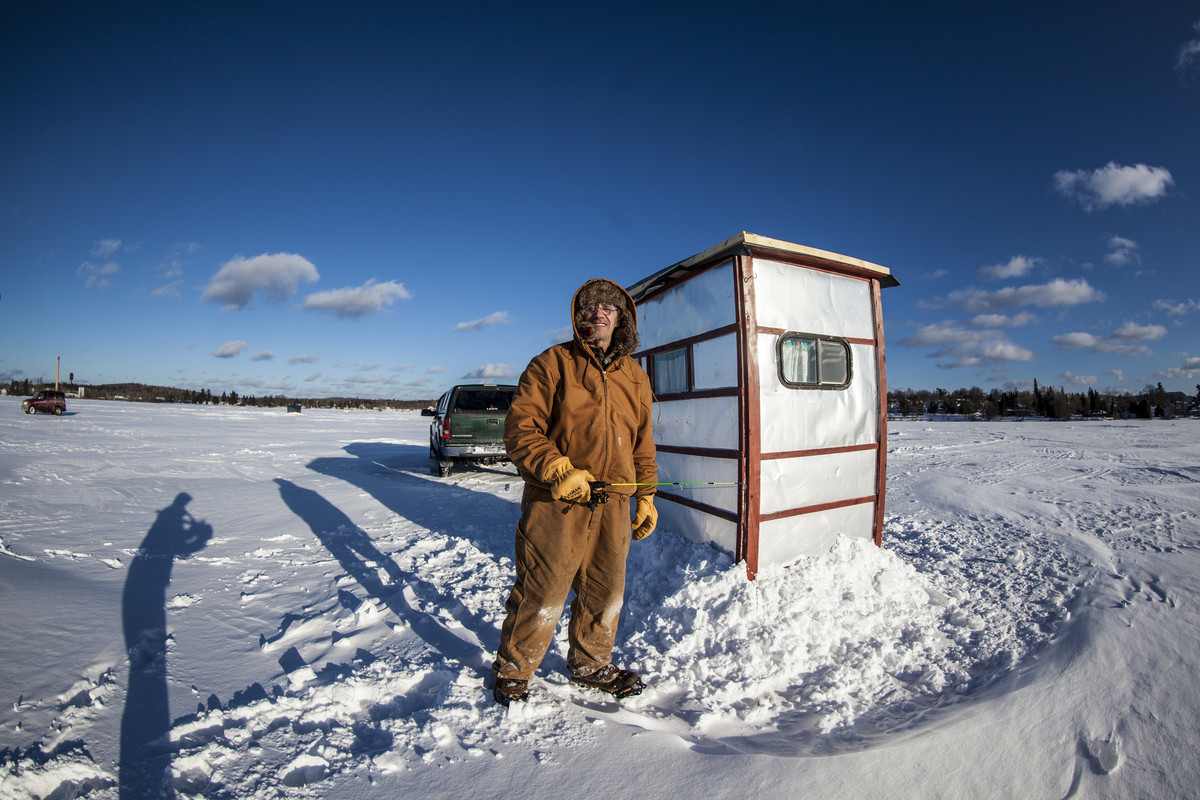
You can fish any frozen lake or pond in the Adirondacks you have mind to (as long as it’s public, of course). But if I may, in my own novice way, suggest one in the heart of the Adirondacks, I think you might just pull some pretty nice fish and catch a glimpse of that winter wonderland effect I mentioned.
Anyway, why ice fish in the heart of the Adirondacks? Well, I’m no expert. But my brother-in-law told me the best ice fishing he’s ever had has been in that part of the Adirondacks — Blue Mountain Lake, Long Lake, Raquette Lake and Indian Lake, in particular — and if you’ve ever met the man, you know that’s basically a Ron Swanson endorsement.
So, get your license, get better acquainted with the basics, the equipment you’ll be using, and the regulations you’ll need to be aware of, call up a guide, bundle up, and get out there.
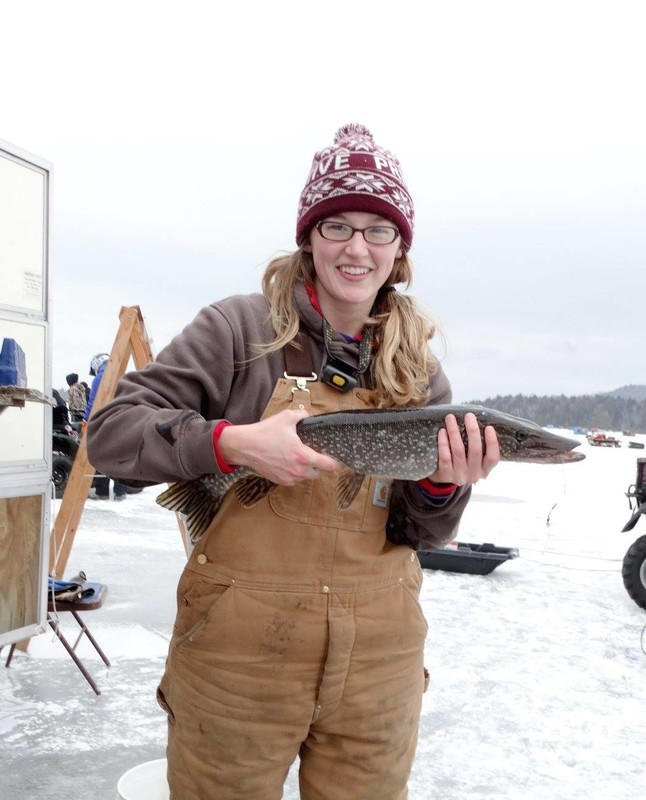
Are you convinced to give ice fishing a go? Good. Of course, you'll want somewhere warm to head back to after a long day of fishing. And if you want your beer off the ice, you’ll find that easily – and some good grub too!

